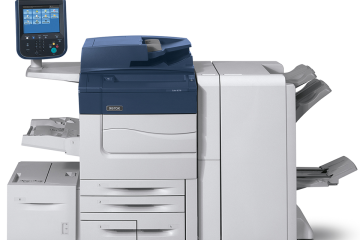Are you concerned about the environmental impact of printing? Do you want to find ways to reduce your carbon footprint while still being able to print important documents? Well, you’re in luck! There are plenty of eco-friendly printing options available that can help you minimize your impact on the environment.
In today’s digital age, printing is still a necessity for many individuals and businesses. However, the production and disposal of paper can have a significant negative impact on the environment, contributing to deforestation and producing harmful greenhouse gases. But don’t worry, there are steps you can take to make your printing practices more sustainable and environmentally friendly.
In this article, we will explore various strategies and techniques for eco-friendly printing, including using recycled paper, optimizing print settings, and adopting digital alternatives. By implementing these practices, you can reduce your carbon footprint and contribute to a more sustainable future.
What Is Eco-Friendly Printing?
Eco-friendly printing is a sustainable approach to printing that aims to reduce the carbon footprint and environmental impact of traditional printing methods. Unlike conventional printing, eco-friendly printing employs various techniques and practices that prioritize environmental responsibility.
One of the main environmental benefits of eco-friendly printing is the significant reduction in energy consumption. By using more energy-efficient printers and adopting sustainable printing practices such as double-sided or duplex printing, the amount of energy required for printing can be greatly minimized. This not only reduces operational costs but also contributes to a positive impact on the environment by lowering carbon emissions and energy usage.
Identifying Sources Of Carbon Emissions
When it comes to printing, it is important to identify and understand the sources of carbon emissions within the process. Several key factors contribute to a company’s carbon footprint, including the production and transportation of materials, energy consumption, and paper waste.
The production and transportation of materials used in printing, such as paper and ink cartridges, generate significant carbon emissions. These emissions result from the extraction of raw materials, manufacturing processes, and the transportation of these materials to printing facilities. By opting for sustainable materials and working with suppliers that prioritize environmentally friendly production and transportation methods, companies can reduce their carbon emissions.
Energy consumption during the printing process is another major source of carbon emissions. The operation of printers, particularly older, less energy-efficient models, can contribute to a company’s carbon footprint. Switching to more energy-efficient printers and adopting sustainable printing practices, like double-sided or duplex printing, can significantly reduce energy consumption and carbon emissions.
Finally, paper waste is a significant contributor to a company’s carbon footprint. Excessive use of paper results in deforestation and the release of carbon stored in trees. Implementing measures to reduce paper waste, such as implementing digital workflows and utilizing printing services that prioritize sustainable practices, can help minimize a company’s carbon footprint.
Reducing Your Carbon Footprint Through Eco-Friendly Printing
Reducing our carbon footprint is essential for mitigating climate change and preserving our environment for future generations. One area where individuals and businesses can make a significant impact is through eco-friendly printing practices. By implementing sustainable solutions and utilizing more efficient printing methods, such as double-sided printing and digital workflows, we can minimize our carbon emissions, conserve resources, and contribute to a greener planet. In this article, we will explore various ways to reduce our carbon footprint through eco-friendly printing and highlight the benefits of adopting sustainable practices.
Optimizing Energy Consumption
Reducing your carbon footprint and minimizing environmental impact are vital considerations in today’s printing practices. One effective approach is to focus on optimizing energy consumption. By implementing energy-efficient strategies and techniques, businesses can significantly reduce their environmental impact while enhancing sustainability efforts.
One key step is to utilize renewable energy sources for powering printing operations. Installing solar panels or purchasing energy from renewable sources can provide a sustainable solution while reducing greenhouse gas emissions. Additionally, upgrading to more energy-efficient printers can lead to substantial energy savings. Newer models often incorporate advanced technologies that consume less energy without compromising print quality.
Taking specific actions within the printing environment can also make a considerable difference. For instance, simply turning off printers when not in use and utilizing power-saving features can significantly reduce energy consumption. Introducing managed print services (MPS) is another effective approach. MPS providers can assess and optimize your print environment, leading to energy-efficient practices and a reduction in operational costs.
Recycling & Reusing Materials Whenever Possible
In the quest for eco-friendly printing practices, one of the key strategies is to prioritize the recycling and reusing of materials. This approach holds immense importance in reducing carbon emissions and landfill waste associated with printing activities.
When it comes to paper, recycling is a crucial step. By recycling paper waste instead of discarding it, businesses can significantly reduce their carbon footprint. The process of recycling paper requires fewer resources and emits fewer greenhouse gases compared to producing paper from raw materials. By reusing paper through double-sided printing or utilizing scrap paper for internal purposes, companies can further minimize both paper waste and the need for fresh paper production.
In addition to paper, other printing-related items such as ink cartridges can also be recycled. Recycling ink cartridges not only prevents them from ending up in landfills but also reduces the demand for new cartridges, which helps conserve raw materials. Many manufacturers and office supply stores offer ink cartridge recycling programs, making it convenient for businesses to participate and contribute to sustainability efforts.
Establishing recycling programs within an organization is highly beneficial. By setting up designated recycling stations and educating employees about responsible waste management, businesses can further drive the recycling and reusing of materials. Partnering with local facilities or organizations that specialize in recycling can also help ensure that the materials are properly disposed of or repurposed.
Using Eco-Friendly Inks & Toners
Using eco-friendly inks and toners is an essential aspect of eco-friendly printing. Traditional petroleum-based inks have a significant negative impact on the environment due to their high carbon emissions and contribution to air pollution. By replacing these inks with more sustainable alternatives like soy-based or water-based inks, businesses can reduce their carbon footprint and mitigate their impact on the environment.
One of the main benefits of using eco-friendly inks is the reduction in carbon emissions. Petroleum-based inks are derived from non-renewable fossil fuels, whereas soy-based or water-based inks are derived from renewable resources. This switch not only helps to decrease the demand for fossil fuel extraction but also lowers greenhouse gas emissions associated with ink production.
Another advantage of eco-friendly inks is cost savings. While it may seem counterintuitive, using these alternative inks can actually save businesses money in the long run. Eco-friendly inks tend to last longer and require less ink during printing, resulting in less frequent replacement of ink cartridges and lower printing costs.
Additionally, eco-friendly inks have lower emissions of volatile organic compounds (VOCs), which are harmful chemicals released into the air during printing. By using inks with lower VOC emissions, businesses can improve indoor air quality in their office spaces and contribute to a healthier working environment.
Choosing Sustainable Alternatives To Paper Products
Choosing sustainable alternatives to paper products is an important step towards reducing your carbon footprint and demonstrating social responsibility. By opting for environmentally friendly options, you can minimize the negative impact on forests and contribute to a healthier planet.
One sustainable alternative worth considering is PaperWise, a paper made from agricultural waste. This innovative paper not only reduces the need for virgin wood pulp but also contributes to local communities in South America and India by utilizing agricultural residues. By supporting PaperWise, you are directly participating in the development of sustainable economies and empowering farmers.
Another option is recycled paper with high post-consumer waste content. By using recycled paper, you are reducing the demand for virgin fibers and promoting a circular economy. This helps divert waste from landfills and saves trees from being cut down.
Processed chlorine-free (PCF) paper is another sustainable choice. PCF paper is produced without using chlorine-based bleaching agents, which can result in the release of harmful toxins. This option is not only better for the environment but also ensures that the production process is safer for workers.
When choosing sustainable alternatives to paper products, it is crucial to consider the entire lifecycle of the product, from raw materials to disposal. By making conscious choices, you can have a positive impact on the environment and fulfill your social responsibility.
Minimizing Raw Material Waste
Implementing strategies and techniques to minimize raw material waste is crucial in eco-friendly printing practices. Here are a few measures that can be taken to achieve this goal.
Firstly, optimizing print runs is essential in reducing waste. By carefully planning and scheduling print jobs, unnecessary printing can be avoided. This ensures that the exact quantities needed are printed, minimizing paper and ink waste.
Calibrating printing equipment is another effective way to minimize errors and reprints. Properly calibrated printers produce higher-quality prints with accurate colors, reducing the need for reprints and minimizing the consumption of paper and ink.
Promoting double-sided printing is a simple yet effective strategy. Encouraging employees and clients to print on both sides of the paper significantly reduces paper usage and waste. This can be achieved through setting printers to default double-sided printing or educating individuals about the environmental benefits.
Using digital proofs instead of physical ones can also help reduce raw material waste. With advancements in technology, digital proofs provide an accurate representation of the final product, eliminating the need for unnecessary printouts and saving paper and ink.
Additionally, implementing recycling and waste disposal practices is crucial. This includes properly recycling paper, ink cartridges, and other printing-related materials. By partnering with recycling companies and promoting responsible waste management, the environmental impact of printing can be significantly reduced.
Establishing Targets And Goals For Reduction In Carbon Emissions
Establishing targets and goals for reducing carbon emissions is a crucial step in the journey towards a greener and more sustainable future. These targets serve as benchmarks that guide businesses and organizations in their efforts to minimize their carbon footprint and contribute to mitigating climate change.
Setting targets and goals is important because it provides a clear direction and focus for carbon reduction efforts. By having measurable targets in place, businesses can track their progress and evaluate the effectiveness of their strategies. This helps ensure accountability and drives continuous improvement in environmental performance.
To establish these targets and goals, businesses can take several specific steps. The first step is conducting an emissions inventory to understand the current level of carbon emissions. This inventory provides a baseline from which to measure progress and set realistic targets. Benchmarking against industry standards and best practices is another crucial step, as it helps businesses ensure that their targets are ambitious yet attainable.
Engaging stakeholders is also essential in this process. By involving employees, customers, suppliers, and other relevant parties, businesses can gain valuable insights and support for their carbon reduction initiatives. This collaboration fosters a sense of shared responsibility and encourages innovation in finding sustainable solutions.
Setting Up A System to Monitor Progress Towards Those Goals
Setting up a system to monitor progress towards carbon emission reduction goals is crucial for businesses committed to sustainable practices. This system allows organizations to track their environmental impact and identify areas for improvement. Here are the steps to establish such a monitoring system:
1. Analyze current carbon emissions: Conduct a thorough analysis to understand the key drivers of carbon emissions in your printing operations. This includes evaluating equipment efficiency, paper usage, energy consumption, and supply chain distances. Identify high-impact areas that offer the greatest potential for improvement.
2. Set achievable goals: Based on the emissions analysis, establish realistic and measurable goals for reducing carbon emissions. These goals should align with industry standards and best practices, ensuring they are challenging yet attainable.
3. Continuous monitoring and review: Implement a regular monitoring system to track carbon emissions over time. This can involve utilizing software or tools that measure energy consumption, paper waste, and other relevant metrics. Regularly review progress to identify trends, areas of improvement, and potential challenges.
4. Staff training and engagement: Conduct training sessions to educate employees about the importance of carbon emission reduction goals and how their actions contribute to the overall impact. Encourage staff members to suggest ideas for improving printing practices and reducing waste.
5. Establish waste reduction goals: In addition to carbon emissions, set specific goals for reducing paper waste. Encourage double-sided or duplex printing, adopt digital processes where possible, and optimize print job distribution to minimize unnecessary printing.

Conclusion
In conclusion, adopting eco-friendly printing practices is crucial for reducing our carbon footprint and mitigating the negative impact on the environment. By analyzing current carbon emissions, setting achievable goals, continuously monitoring progress, and engaging staff members through training, businesses can take significant steps towards a more sustainable future.


